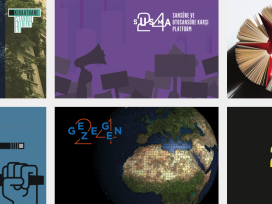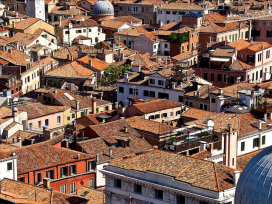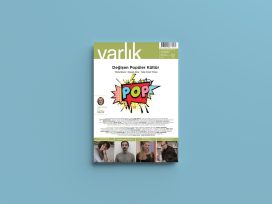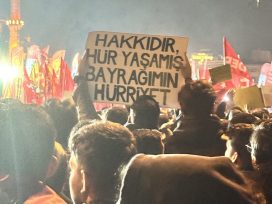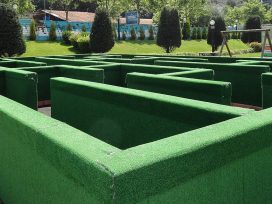Informal urban settlements, otherwise known as slums or shanties, appeared at various moments during the twentieth century as the spatial manifestation of urban poverty. Their histories differ from one socio-geographic region to the other: the gecekondu districts in Turkey developed under different circumstances to the favelas in Brazil, and so on. However, what unites these settlements is that they make visible uneven capitalist development on an urban scale. Urban researchers have studied these districts extensively, focusing on a variety of issues. Urban planners, for example, made an effort to develop ideas about how to normalize irregular urban settlements, while sociologists have studied the structural and economic causes for the emergence of such districts. Anthropologists have focused both on questions of gender in shanties as well as on their potential for resistance in everyday life. Until twenty years ago, informal settlements were studied mainly as an urban sociological phenomenon under rubrics such as “urban poverty” or “rapid urbanization”. Recently, however, they have begun to appear in very different contexts, for example in architectural/urban planning projects and debates, contemporary art and popular culture.
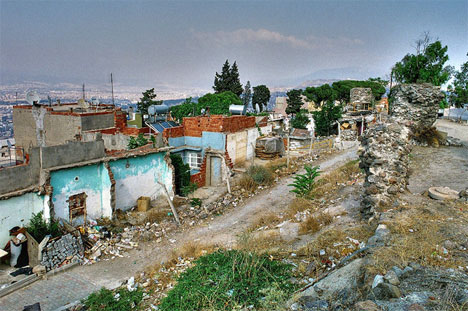
Illegal slum housing and centuries-old fortification walls rub shoulders in Izmir. Photo: Stelios Zacharias. Source:Flickr
Among the architects and planners actively involved in the production of urban space, some have begun to approach informal settlements from a different angle. What used to be seen as a “social problem” or case of “crude urbanization” has recently come to be viewed more positively as a legitimate form of urban development. For example, the Guatemalan-American architect Teddy Cruz organizes tours to the makeshift urban settlements in Tijuana on the US-Mexican border, built from found materials by poor people using informal methods. He places these settlements at the centre of his architectural thinking, emphasizing and finding inspiration in the flexible, democratic and creative character of such spaces. In the words of Nicolai Ouroussoff, architecture critic of the New York Times, Cruz approaches the settlements in Tijuana with “an open mind” and defends them as “a humane model” against soulless gated communities and the alienating American suburbs (Ouroussoff 2006). Cruz learns from Tijuana and utilizes this knowledge in his architectural designs. In other words, Cruz’s celebration of informally produced urban spaces affirms them as a valuable source of knowledge and inspiration. This supports part of my argument that a paradigm shift has occurred in architectural knowledge and practice when it comes to approaches to informal settlements.
Another noteworthy case is Rem Koolhaas, a world-famous architect who has been studying non-western global metropolises since the 1990s. Koolhaas is fascinated by the spontaneous organization of the urban economy by the inhabitants of Lagos, Nigeria. He has described how the structural informality of the city at first seemed chaotic, but later enchanted him. The number of similar projects, seminars, art and research projects around the world, several of which are entitled “Learning from X [city]”, has increased rapidly in recent years. These often have a city tour element, which unavoidably resembles touristic slum tours or “urban reality tours” currently run in various cities around the world on a more popular level. In departments of architecture and urban planning, such projects transfer knowledge gleaned from studying informal settlements into professional practice, as is the case with Teddy Cruz. For those working in disciplines like urban sociology and anthropology, such excursions can help question and re-evaluate all-too familiar theoretical approaches in urban studies and space-making practices, usually produced through Eurocentric perspectives. Excellent examples of such research can be found on the collaborative blog Favelissues, started by Adriana Navarro Sertich while she was studying architecture, urban and regional planning in California, and which is continuously enriched by contributions from researchers from various fields.
Contemporary artworks and informal settlements
In some cases, the tendency to see informal settlements positively and to learn from them is combined with actual projects carried out with their inhabitants. This resembles the participative design practices of the 1960s and ’70s, but it has also become a genre in contemporary art, referred to by art historians and critics as collaborative art or public art. Emerging at the end of the 1990s, this set of art practices involves collaborating with the urban poor, both in informal settlements and in immigrant neighbourhoods in European cities. Some artists, such as Thomas Hirschhorn, have said that they prefer to avoid a charitable approach and are concerned not to become pseudo-social workers, mimicking public services whose aim is to solve or to normalize “social problems” and to maintain social stability and control. Other artists, in contrast, have gone so far as to use their work to satisfy some of the basic needs of the urban poor. Marjetica Potrc, a Slovenian artist, has built a fully-functioning modern toilet connected to Caracas’s sewage system to serve the residents of one of the favelas of the city.
Contemporary artworks taking an affirmative approach to informal settlements are not limited to collaborative practices. In the last two decades, some contemporary art works have come very close to turning the gecekondu neighbourhoods or the favelas into aesthetic objects. In these cases, informal settlements, or rather their replicas or representations, have been turned into a spectacle as a result of being re-situated in an art context. The distinguishing characteristic of these works is that they were intended to be experienced primarily visually, thus relegating their social relevance. The work by the collective Oda Projesi entitled Ada (Island), exhibited at the Istanbul Biennial in 2003, attempted to represent a shanty house on the art “stage”. A replica of a gecekondu was built in the backyard of the venue, Antrepo, together with actual gecekondu master-builders. This sculptural/performative part of the artwork was accompanied by a billboard image placed on the street in front of Antrepo. It featured an enlarged reproduction of a newspaper classifieds page, in which an advertisement for a “gecekondu for rent” is highlighted. The text simulates the commercial language of advertisements for real estate. Various events also took place in Projesi’s space in Galata.
In Ada, the artists’ original intention was to highlight the production process involved in the creation of a gecekondu. Nonetheless, they were unable to prevent the production of a spectacle, mainly because of the institutional framework of the biennial. Sibel Yardimci criticized Oda Projesi’s work for having aestheticized the gecekondu (Yardimci 2005). She defined the gecekondu as a “social problem” and wrote that Oda Projesi’s work emptied it of its social content and turned it into a cultural commodity.
Slum tours
Aside from architecture, urbanism and contemporary art, popular culture is another area where urban poverty has taken the form of a cultural commodity. The most striking development here involves slum tours for tourists in cities where structural urban poverty has led to permanent informal settlements, such as Cairo or São Paolo. The forerunners of these tours are to be found in the practice of “slumming” in the nineteenth century. Bianca Freire-Medeiros, the author of Touring Poverty, shows in her research on Rio de Janerio that these tours point to a new condition that involves the commodification of urban poverty. People taking these tours look at, see and watch poverty and its spaces. The tours not only promise exotic experiences, they also serve as a sort of conscience cleanser for well-off tourists, who believe that by paying for the tours they are helping the poor. According to Freire-Medeiros, some tourists believe that they have unmediated, direct experiences, while others stroll around informal settlements fantasizing that they are in a film set. (Freire-Medeiros 2007, 2009, 2013)
Aestheticization of poverty
The films Slumdog Millionaire (2008) and City of God (2002) could well be discussed in terms of the aestheticization of poverty. As cultural or artistic products catering to the broad public, both employ advertising aesthetics to reify and visualize exceptionally difficult social phenomena such as poverty, squalor and violence. In Danny Boyle’s film Slumdog Millionaire, the Mumbai slum of Dharavi is transformed into a poor but colourful neighbourhood. While there is undoubtedly a difference between experiencing a favela in Rio de Janerio first hand as a tourist and watching images of Dharavi in the cinema, in both cases a living environment is imagined, aestheticized and turned into a spectacle.
The aestheticization of informal settlements operates in a similar way to the gentrification of music. In the Turkish case, both come together in Baba Zula’ album Gecekondu (2010). Baba Zula also like to take a belly dancer on stage with them in jazz clubs such as Babylon. A broader case in point is the ongoing transformation of the Turkish music market, which may well be called “the gentrification of arabesque music”. One well-known example is the gentrification of the music of Müslüm Gürses, which was so melancholy that it prompted concert attenders to rip their chests with razor blades. After working on albums with intellectuals from Istanbul and collaborating with pop singers, Gürses’s music became less introverted and more popular among the urban educated elite. Turkish television has also profited from this trend. One of the latest projects of the producer Sinan Çetin’s is a talk show entitled Gecekondu. The show might be regarded as an effort to locate the living spaces of magandas, the lower-class, crude, typically immigrant men.
At the risk of taking too big a step, I would like to address another aspect of popular culture: fashion. In her article on the new upper-class venues in Istanbul, Kübra Parmaksizoglu talks about the “poorgeoisie” movement that emerged in fashion design in 2009, taking the form of poor-looking, torn, worn-out designs (Parmaksizoglu 2011, 69-83). We learn from Parmaksizoglu that Izzet Çapa, an investor known for his avant-garde projects in Istanbul’s world of entertainment, is very taken by this new movement and plans to open new venues in Istanbul based on a theme that he calls “poorism”. Here, poverty is emptied of its political content completely and transformed into a style. Indeed, a similar thing happens when, in his new collection “Dolmus”, the young Istanbul fashion designer Niyazi Erdogan takes his inspiration from the visual codes of the arabesque everyday cultures of the 1970s (Arna 2011). In this case, what is stripped off its social meaning is the history of immigration in Istanbul in the second half of the twentieth century and the lived experiences of the immigrants who actively made this history.
What do all these appearances signify? What is the meaning of the paradigm shift in the representation of urban poverty and its spatial counterpart, informal settlements? What are the relationships between emergent representations of slums and ongoing processes of gentrification and urban transformation? Where do we stand as academics, artists, urban researchers and activists, who often belong to the middle or upper-middle classes in economic and social terms, but most importantly in terms of cultural capital, who enjoy the amenities of the city and produce critical thinking under these very conditions? What is our contribution to the commodification and aestheticization of poverty? What roles are we playing vis-à-vis the emergence of gecekondu chic? Where do we draw the line between criticizing such transformations and contributing to them?
References
Arna, Sibel (2011): “Haute couture’e bir-iki!” Hürriyet Cumartesi, 13 August 2011, www.hurriyet.com.tr/cumartesi/18470355.asp?gid=381.
Basualdo, Carlos and Laddaga, Reinaldo (2004): “Rules of engagement.” Artforum, March 2004, 166-69.
Batuman, Bülent (2008): “Organic intellectuals of urban politics? Turkish urban professionals as political agents, 1960-80.” Urban Studies 45, no. 9 (2008): 1925-46.
Cruz, Teddy (2013): “How architectural innovations migrate across borders.” Lecture: www.ted.com/talks/teddy_cruz_how_architectural_innovations_migrate_across_borders and blog.ted.com/2014/02/05/architect-teddy-cruz-shares-5-projects/.
Favelissues: urban informality + urban development. Blog: favelissues.com
Freire-Medeiros, Bianca (2007): “And the Favela went global: The invention of a trademark and a tourist destination.” In: The Global Challenge and Marginalization, edited by MárcioValença, Etienne Nel and Walter Leimgruber. Nova Science Publishers.
Freire-Medeiros, Bianca (2009): “The favela and its touristic transits.” Geoforum 40, no. 4 (2009) 580-88.
Freire-Medeiros, Bianca (2013): Touring Poverty. Routledge.
Hecker, Tim (2010): “The slum pastoral: Helicopter visuality and Koolhaas’s Lagos.” Space and Culture 13, no. 3 (2010): 256-69.
Koven, Seth (2004): Slumming: Sexual and Social Politics in Victorian London. Princeton University Press.
Ouroussoff, Nicolai (2006): “Shantytowns a new suburban ideal.” New York Times, 12 March 2006, www.nytimes.com/2006/03/12/arts/design/12ouro.html.
Özkan, Derya (2008): “The Misuse value of space: spatial practices and the production of space in Istanbul.” PhD thesis submitted to the University of Rochester, hdl.handle.net/1802/6201
Parmaksizoglu, Kübra (2011): “Istanbul’da eglencenin “entel” hali: 1980’den günümüze üst sinif eglence hayatindaki degisimler”, in: Istanbul’da Eglence, edited by Volkan Aytar and Kübra Parmaksizoglu, 69-83. Istanbul Bilgi Üniversitesi Yayinlari.
Ross, Ellen (2007): Slum Travelers: Ladies and London Poverty, 1860-1920. University of California Press.
Rudofsky, Bernard (1964): Architecture Without Architects: A Short Introduction to Non Pedigreed Architecture. Museum of Modern Art.
Sheppard, Eric; Leitner, Helga and Maringanti, Anant (2013): “Provincializing global urbanism: A manifesto.” Urban Geography 34, no. 7 (2013): 893-900.
Tekelioglu, Orhan (2010): “Magandanin önlenemez yükselisi.” Radikal Iki, 12 September 2010.
van der Haak, Bregtje (2003): Lagos / Koolhaas. Film: icarusfilms.com/new2003/lag.html.
Yardimci, Sibel (2005): Kentsel Degisim ve Festivalizm: Küresellesen Istanbul’da Bienal. Iletisim Yayinlari.
